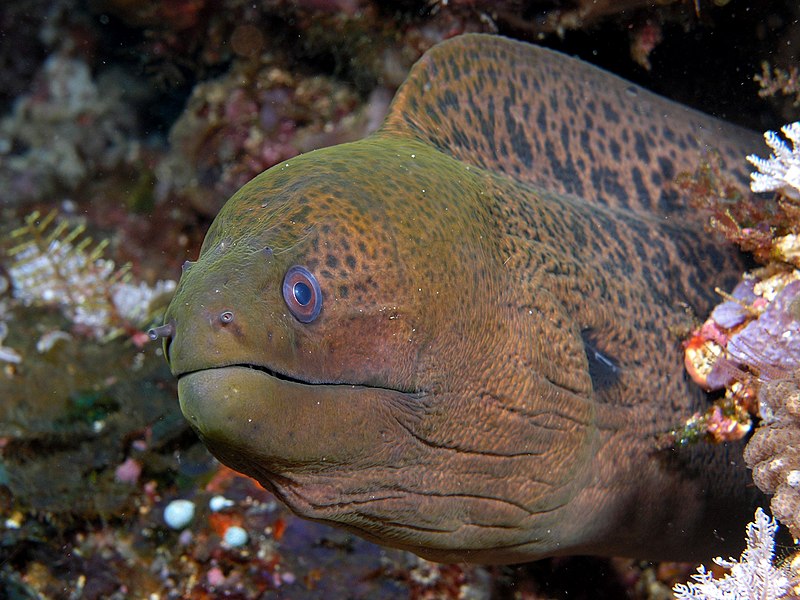UNIVERSITY PARK, Pa. - Comparing dredged and undredged sections of the Allegheny River, reduced populations of fish and less variety of aquatic life occurred in areas where gravel extraction took place, according to researchers in Penn State's College of Agricultural Sciences.
The researchers investigated navigation pools 7 and 8 near Kittanning and Templeton, and published their results in the journal Freshwater Biology.

Immense barges bearing huge shovels have scooped gravel out the Allegheny's pools 7 and 8 for decades. In gauging the impact of the substratum removal on the river's aquatic life, researcher Jonathan Freedman studied small fish, such as the rainbow darter shown in the inset, because they have limited movements and specific habitat requirements, making them more susceptible to the effects of dredging. Image: Jonathan Freedman
"Understanding and untangling the complex effects of human activities on aquatic ecosystems present a challenge to ecologists and resource managers," said lead investigator Jonathan Freedman. "While the physical impacts of dredging have been relatively well studied, less is known about the ecological impacts, particularly on large-river fish populations."
Freedman focused on small, bottom-dwelling fishes such as darters because they have limited movements and specific habitat requirements, making them more susceptible to the effects of dredging. Several of these species -- including Tippecanoe, bluebreast, gilt and longhead darters -- are listed on Pennsylvania's endangered and threatened species lists.
Freedman, currently a postdoctoral researcher at the Illinois Natural History Survey, received his doctorate in wildlife and fisheries science in 2010 from Penn State. His research was overseen by his co-advisers, Jay Stauffer, Distinguished Professor of ichthyology, and Bob Carline, adjunct professor emeritus of fisheries and retired leader of the Penn State Cooperative Fish and Wildlife Research Unit.

Jonathan Freedman, shown here untangling a fish from a trap net, developed an electrified benthic trawl to sample bottom fish assemblages at dredged and undredged sites in the deep river pools. Image: Jonathan Freedman
"We found that at dredged sites, with a maximum depth averaging about 12 meters (slightly more than 13 yards) there was lower species richness and diversity, driven by fewer sensitive species, than at undredged sites in the same navigational pools, which had an average maximum depth of about 5 meters (approximately 5.5 yards)," Freedman said.
The research found that total catch, species richness and diversity were negatively correlated with depth, while species richness, diversity and proportion of species that need rocky habitats to spawn were lower at dredged than at undredged sites.
"Our analysis revealed that taxa, such as darters, were associated predominantly with undredged sites, while generalist species, such as catfish and suckers, were more associated with dredged sites," Freedman said.
The research differed from most prior studies of the effects of dredging on fish, which were conducted in streams and shallow rivers.
"Large rivers are complex ecosystems containing unique fish communities that cannot be understood simply by scaling up the findings from lower-order streams and shallow rivers," Freedman noted.
As a result, "the effects of dredging on deeper rivers -- where methods such as electroshocking, gill nets and seines are ineffective for sampling the channel -- were largely unknown," he said. "So we developed an electrified benthic trawl to sample bottom fish assemblages at dredged and undredged sites in a deep, gravel-bed river with a long history of dredging."
In-stream removal of substratum affects the physical and flow characteristics of the river as the channel is modified, creating relatively homogenous, deep stretches, Freedman explained. The removal of coarse gravel and cobble increases river depth, and subsequent accumulation of fine sediment and detritus can greatly alter habitat characteristics required by aquatic organisms.
Subsequent bank erosion and head-cutting -- the erosion of the upstream end of the dredged area -- also can result, further homogenizing the aquatic habitat. The result is a loss of critical shallow-water habitats.
Habitat structure for invertebrates and fish is lost as gravel and rocks, coarse woody debris and other structure are removed from the river, the researchers found. Increased depth, compounded by water turbidity, reduces light penetration to the river bottom and reduces biomass and diversity of submerged vegetation and algae.
As a consequence, flowing water species are displaced by still water species, while generalist and invasive species displace native habitat specialists.
"Changes in substratum composition reduce populations of invertebrates living among rocks and burrowing within sediments and terrestrial detritus, thus altering not only invertebrate assemblage composition, but also fish-foraging efficiency and habitat use," Freedman said.
Many fish species depend on structured habitats for protection from predators and as refuge from the current, and some require rocky and gravel habitat in which to spawn. The loss of this habitat, as well as increased sedimentation rates due to dredging, can render habitats unsuitable for reproduction even if adults are able to survive.
River dredging causes a sort of regime shift in fish species, concluded Freedman.
"Increased turbidity alters fish-foraging ability, while high sedimentation can affect spawning," he said. "Species that are tolerant of a wide range of environmental conditions come to dominate the community."
Journal reference: Jonathan A. Freedman, Robert F. Carline, Jay R. Stauffer. Gravel dredging alters diversity and structure of riverine fish assemblages. Freshwater Biology, 2013; 58 (2): 261 DOI: 10.1111/fwb.12056













